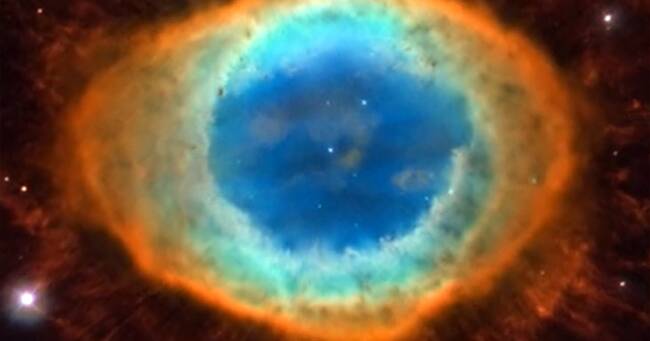Planetary nebulae are like monuments of dead sun-like stars.
They can look very different.
Some are colorful and have spectacular patterns while others are much simpler.
But how are they formed?
- Astronomers have long wondered how a star as round as a billiard ball can create such a complex appearance, says Leen Decin, astrophysicist at KU Leuven University in Belgium.
Twelve red giants
Now, together with an international research team, she has observed the stellar winds in twelve red giants with the Almat Telescope in Chile.
- All our observations of the planetary nebulae can be explained by the fact that the dying stars have one or more companions, says Leen Decin.
The companion may be another star that is part of the same star system as the dying star.
It can also be a large planet.
Plowing up tracks
As the companion spins around the red giant star, it plows up tracks in the star winds that consist of gas and dust.
This may explain why planetary nebulae can have such irregular and peculiar appearances.
They are engraved memories of the solar system's surviving stars and planets, like an inscription on a tombstone.
The research is published in this week's Science.
In five billion years
Leen Decin has also made simulations of what our planet's planetary nebula will look like in six billion years.
- Unfortunately, our own earth will be swallowed up by the sun when it becomes a red giant star.
But Jupiter survives and will create a faint spiral pattern in the red giant's stellar wind.
White dwarf
Our dying sun continues to throw out gas veils until a hard core of carbon and oxygen remains.
It has then become a dead white dwarf that slowly cools.
The planetary nebula will expand into space and eventually dissolve.
- The planetary nebulae are short-lived and only exist around 10,000 years, says Hans Olofsson, astrophysicist at Chalmers University of Technology in Gothenburg.
Star winds
He believes that there is much more to investigate to fully understand how the star's companions create the complex patterns of planetary nebulae.
- It is an interesting study with a lot of new information about red giants' star winds.
But do all red giants form envelopes like this?
We do not know, says Hans Olofsson.

